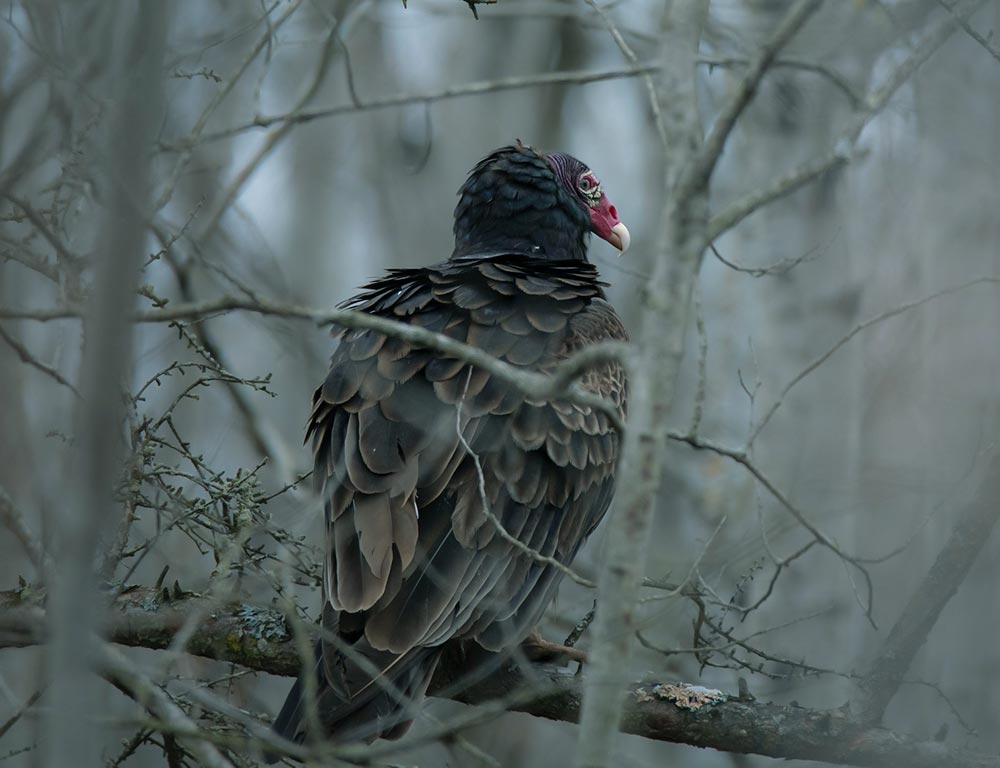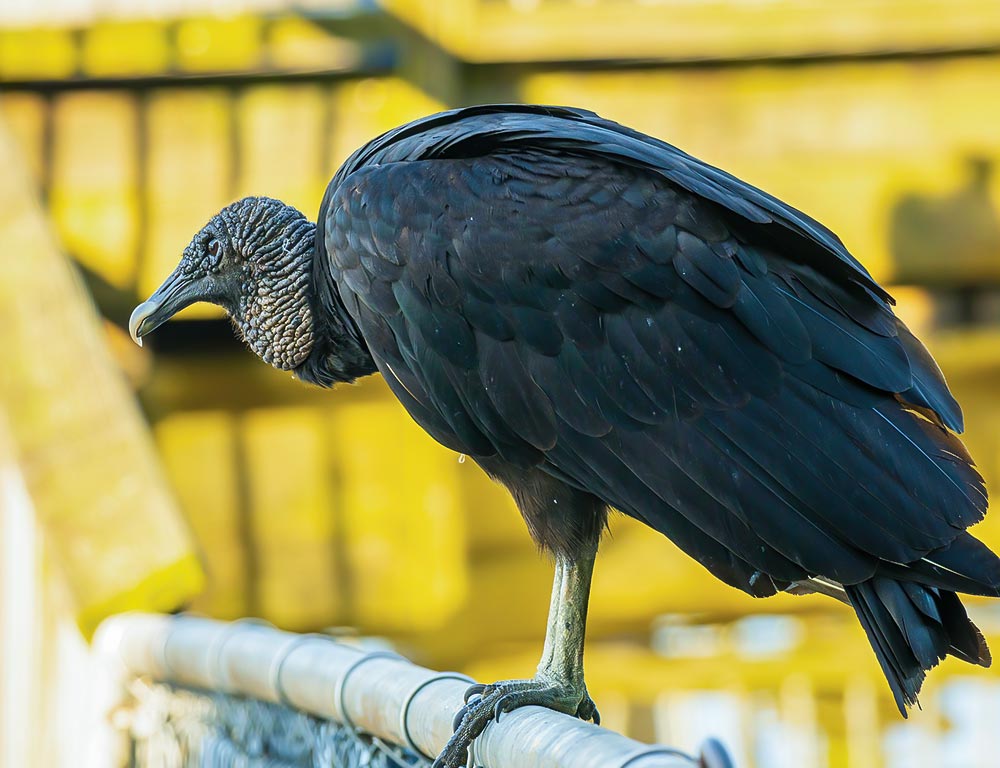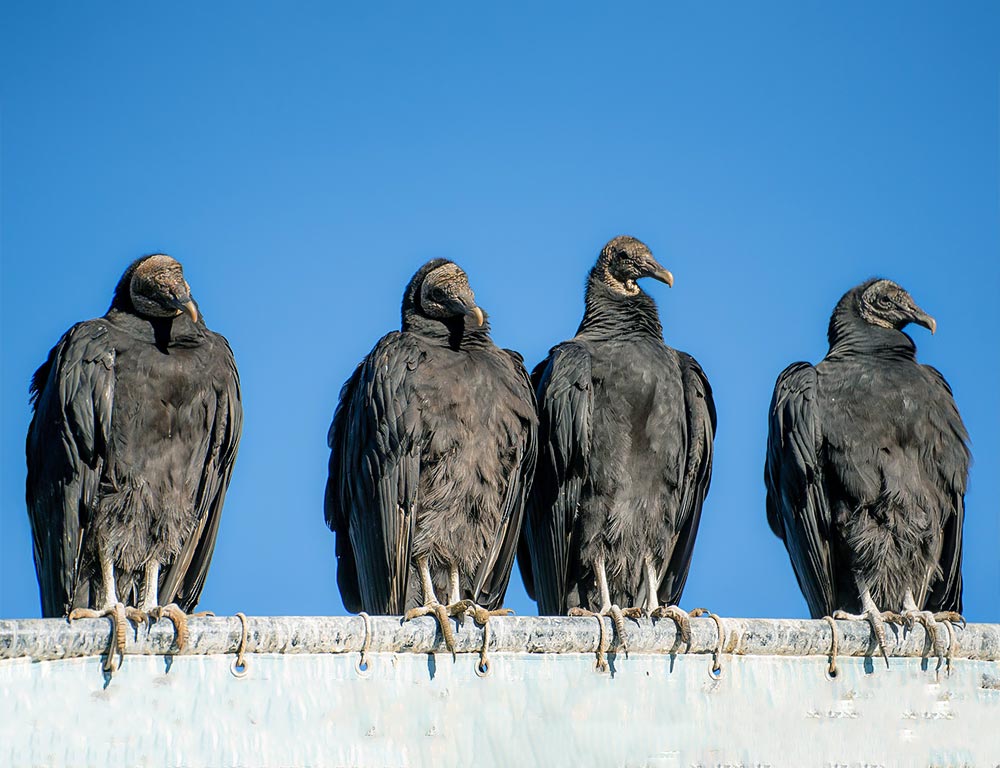In Florida’s warm skies and diverse landscapes, vultures play a vital role as nature’s cleanup crew.
This exploration delves into the intriguing world of vultures in the Sunshine State, shedding light on their distinctive characteristics and ecological significance.
From the Turkey Vulture with its keen sense of smell to the Black Vulture’s distinctive appearance, Florida’s vultures contribute to the efficient disposal of carrion, maintaining the balance of the ecosystem.
Join us on a journey to understand their behaviors, nesting habits, and the crucial role they play in the natural processes of decomposition.
As we navigate the skies and landscapes of Florida, we uncover the often-misunderstood world of vultures, showcasing their essential place in the intricate web of Florida’s biodiversity.
Why There Are Only A Few Species of Vultures in Florida?
Florida has several species of vultures, but the overall diversity is not as high as in some other regions. The reasons for this can be attributed to various ecological and environmental factors.
Here are five points elaborating on why there are only a few species of vultures in Florida:
Climate and Habitat Suitability
Florida’s climate is characterized by warm temperatures and a subtropical environment. Vultures generally prefer open habitats, such as grasslands and savannas, where they can easily spot carrion.
With its mix of wetlands, forests, and urban areas, Florida’s landscape may not be as ideal for all vulture species.
The specific requirements of vultures in terms of climate, vegetation, and habitat structure could limit the number of species that find Florida suitable for habitation.
Availability of Carrion
Vultures primarily feed on carrion, and the availability of this food source is crucial for their survival.
Factors affecting carrion availability, such as the presence of large mammals, roadkill rates, and hunting practices, can influence the distribution of vulture species.
Florida’s land-use patterns and human activities may impact carrion availability, thereby influencing the diversity of vulture species in the region.
Competition with Other Scavengers
Vultures often compete with other scavengers, such as crows, ravens, and mammals. The presence of highly efficient scavengers can limit the ecological niche available for vultures.
Florida’s diverse fauna includes various scavenging species, and the competition for carrion resources may affect the number and types of vultures that can successfully establish and maintain populations in the area.
Human-Wildlife Conflict
Human-wildlife conflict, including vehicle collisions, poisoning, and habitat destruction, can negatively impact vulture populations.
Florida’s expanding urban areas and high traffic density can contribute to roadkill, attracting vultures and exposing them to increased risks.
Human-wildlife conflicts can lead to declines in vulture populations and limit the number of species that can persist in these conditions.
Conservation Status and Threats
Some vulture species may face conservation challenges, such as habitat loss, persecution, and exposure to toxins.
The status of vultures globally and regionally and the level of protection they receive can influence their presence in a particular area.
If certain vulture species face more pronounced threats in Florida, their populations may be limited compared to other regions with more favorable conditions.
It’s important to note that environmental conditions and species distributions can change over time, and ongoing conservation efforts may also influence the presence of vultures in Florida.
2 Types of Vultures in Florida
Soar into Florida’s skies and discover the indispensable role of vultures as nature’s cleanup crew.
This exploration unveils these birds’ unique characteristics and ecological importance, highlighting their vital contribution to the state’s diverse and dynamic ecosystems.
1. Turkey Vulture

- Scientific name: Cathartes aura
- Category: New World vulture
- Population: Abundant; no specific population estimate available.
- Life span: Can live up to 20 years in the wild.
- Size: Adults reach a length of 25-32 inches.
- Weight: Typically weighs between 2 and 5 pounds.
- Food: Primarily carrion; they are scavengers.
- Wingspan: Ranges from 5.5 to 6.5 feet.
- Status: Not listed as threatened.
With its distinctive red head and keen sense of smell, the Turkey Vulture is a common sight in the Florida skies.
These vultures play a crucial ecological role as nature’s cleanup crew, feeding on carrion and helping to control disease by disposing of animal remains. Turkey Vultures are expert soarers, often seen riding thermals for food.
Their social behavior includes roosting in large groups. While they lack the powerful beak of other raptors, their strong stomach acid allows them to digest a variety of pathogens present in decaying flesh.
2. Black Vulture

- Scientific name: Coragyps atratus
- Category: New World vulture
- Population: Abundant; no specific population estimate available.
- Life span: Can live up to 15 years in the wild.
- Size: Adults reach a length of 21-27 inches.
- Weight: Typically weighs between 2 and 5 pounds.
- Food: Primarily carrion; they are scavengers.
- Wingspan: Ranges from 4.5 to 5.5 feet.
- Status: Not listed as threatened.
The Black Vulture, distinguished by its black plumage and short tail, is a prevalent scavenger in Florida. These vultures often form mixed flocks with Turkey Vultures, sharing scavenging duties.
Black Vultures are highly social birds whose roosts can contain hundreds of individuals. They have a robust beak, enabling them to tear through tough hides and access carrion.
Like their Turkey Vulture counterparts, Black Vultures contribute significantly to the ecosystem’s cleanliness by efficiently recycling animal remains. Their adaptability and communal behavior make them a fascinating part of Florida’s avian landscape.
Where Are the Best Places to Spot Vultures in Florida?
Given its diverse ecosystems and abundant wildlife, Florida offers various locations where you can spot vultures. Vultures are often seen soaring in the sky, searching for carrion, and may be observed in both natural and urban settings.
Here are some of the best places to spot vultures in Florida:
Everglades National Park
The expansive wetlands and open areas of Everglades National Park provide an ideal habitat for vultures.
The park is home to both the black vulture and turkey vulture. Look for them circling overhead or perched in trees as they search for carrion.
Big Cypress National Preserve
Adjacent to the Everglades, Big Cypress National Preserve is another prime location for vulture sightings.
The mix of swamps, prairies, and cypress forests attracts these scavengers. Keep an eye on open spaces and along roadways where they may gather.
Myakka River State Park
Located on Florida’s Gulf Coast, Myakka River State Park offers a chance to spot vultures while exploring its diverse landscapes, including wetlands and oak-palm hammocks.
Vultures are often seen soaring above the treetops or perched on snags.
Florida Keys
With their unique ecosystems and abundant marine life, the Florida Keys can be a good place to spot vultures. Keep an eye on the skies while exploring the various islands and coastal areas.
Paynes Prairie Preserve State Park
This state park, located south of Gainesville, features diverse habitats, including wetlands and prairies.
Vultures, along with other bird species, can be observed here. Elevated viewpoints may offer excellent opportunities for birdwatching.
Corkscrew Swamp Sanctuary
Situated in southwestern Florida, Corkscrew Swamp Sanctuary is known for its old-growth cypress forest and diverse birdlife. Vultures are often seen circling above or perched on tree branches.
Urban Areas and Highways
Vultures are adaptable and can be found in urban areas as well. Keep an eye on highways, especially if open spaces or wetlands are nearby. Vultures are attracted to roadkill, making highways a common location for sightings.
Lake Apopka Wildlife Drive
Located near Orlando, Lake Apopka Wildlife Drive offers a chance to observe wildlife, including vultures, in a restored wetland habitat. The expansive views and abundant wildlife make it a promising spot for birdwatching.
When attempting to spot vultures, respecting wildlife and their habitats is essential.
Binoculars or spotting scopes can enhance your viewing experience, and visiting these locations during the cooler parts of the day when vultures are more active can increase your chances of sightings.
Additionally, be mindful of conservation guidelines and park regulations to minimize environmental impact.
Steps to Preserve Vultures in Florida

Preserving vultures in Florida requires a combination of conservation efforts, habitat protection, and public awareness.
Vultures play a crucial role in ecosystems by helping to control disease and maintaining a balance in the scavenger guild. Here are steps that can contribute to the preservation of vultures in Florida:
Habitat Protection
Determine key habitats where vultures reside, breed, and forage. This includes areas with suitable roosting sites, nesting locations, and abundant carrion.
Advocate for establishing and maintaining protected areas encompassing critical vulture habitats. National parks, wildlife reserves, and sanctuaries can help safeguard these areas.
Carrion Management
Address human-wildlife conflicts, such as vehicle collisions and poisoning, by implementing measures to reduce these threats. Education campaigns and signage can raise awareness about the importance of vultures and the dangers they face.
Research and Monitoring
Regularly monitor vulture populations in Florida through surveys and research projects. This helps assess the health of the population and identify potential threats.
Understand the migration patterns of vultures to ensure that critical stopover sites are protected, especially if vultures migrate between different regions.
Community Engagement
Implement educational programs targeting local communities, schools, and wildlife enthusiasts. Promote awareness about the ecological importance of vultures and their role in maintaining healthy ecosystems.
Share success stories and ongoing conservation initiatives to inspire community involvement and support.
Legislation and Policy Advocacy
Support and promote legal measures that protect vultures and their habitats. This may include lobbying for stricter regulations against poisoning, hunting, or habitat destruction.
Work with relevant authorities to develop and implement policies prioritizing vulture conservation in land-use planning and development projects.
Captive Breeding and Rehabilitation
Support the establishment of rehabilitation centers equipped to care for injured or sick vultures. These centers can be crucial in rescuing and releasing vultures back into the wild.
Explore the feasibility of captive breeding programs to supplement wild populations, especially for species facing significant threats.
International Collaboration
Partner with national and international conservation organizations to share knowledge, resources, and best practices for vulture conservation.
Contribute to global efforts addressing vulture conservation, particularly if vulture species in Florida are part of larger migratory populations.
Monitor and Adapt
Continuously monitor the effectiveness of conservation measures and be willing to adapt strategies based on new research findings, changing environmental conditions, or emerging threats.
Preserving vultures in Florida requires a multi-faceted approach that involves collaboration among government agencies, conservation organizations, local communities, and the public.
The key is to address both direct threats and underlying factors that impact vultures and their habitats.
Wrapping Up
The vultures of Florida are indispensable players in the state’s ecosystems, serving as nature’s cleanup crew.
Their unique characteristics and ecological significance, from efficient carrion disposal to maintaining ecosystem balance, underscore their vital role.
Understanding and appreciating the crucial contribution of vultures in Florida is key to preserving the state’s biodiversity.
As we navigate the skies and landscapes, these often misunderstood birds reveal themselves as essential stewards of the environment, ensuring the seamless functioning of natural processes.